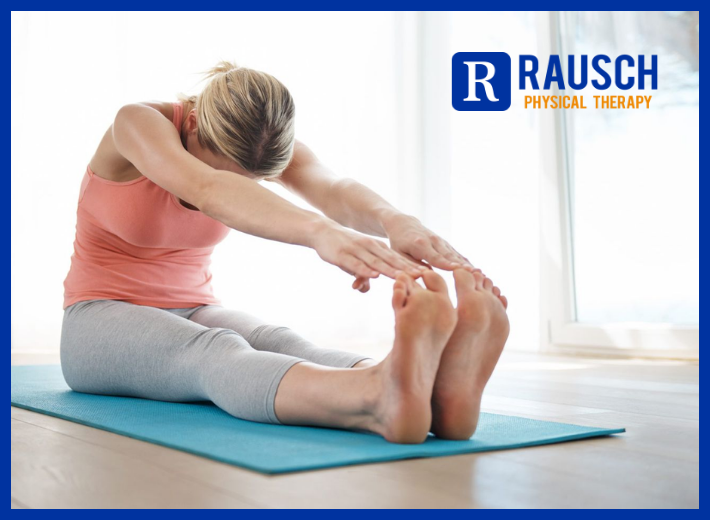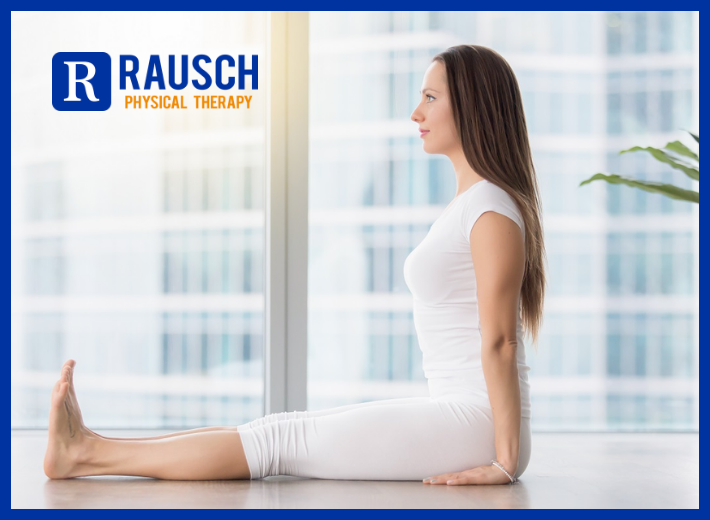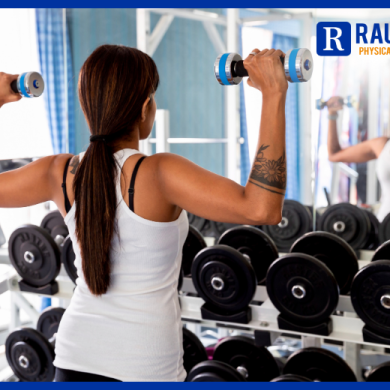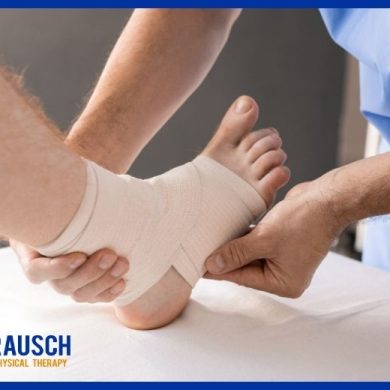At Rausch Physical Therapy and Wellness, we believe that movement is medicine—at every age and every stage of life. That’s why we’re excited to announce our new partnership with Fort Fitness,
Posture Perfection: Tips and Exercises
October 1, 2023 4:56 pm / Category: Rausch Physical Therapy

Maintaining good posture and its impact on our overall health and well-being is often underestimated. From sitting at a desk all day to hunching over our devices, poor posture has become a common modern-day affliction. Learn the crucial role your posture plays and strategies to improve your routine by reading the article below.
Good posture involves training your body to stand, walk, sit, and lie in positions where the least strain is placed on supporting muscles and ligaments during movement or weight-bearing activities.
If any of the following guidelines causes an increase of back pain or spreading of pain to the legs, do not continue the activity and seek the advice of a doctor or physical therapist.
The spinal curves
Your spine has natural curves that form an S-shape. Viewed from the side, the cervical and lumbar spines have a lordotic, or a slight inward curve, and the thoracic spine has a kyphotic, or gentle outward curve. The spine’s curves work like a coiled spring to absorb shock, maintain balance, and to facilitate the full range of motion throughout the spinal column (see Anatomy of the Spine).
These curves are maintained by two muscle groups, flexors and extensors. The flexor muscles are in the front and include the abdominal muscles. These muscles enable us to flex, or bend forward, and are important in lifting and controlling the arch in the lower back.
The extensor muscles are in the back. These muscles allow us to stand upright and lift objects. Working together these muscle groups act as guy wires to stabilize your spine.
What is good posture?
Posture is the position in which you hold your body upright against gravity while standing, sitting, or lying down.
Proper posture requirements:
- Good muscle flexibility
- Normal motion in the joints
- Strong postural muscles
- A balance of muscles on both sides of the spine
- Awareness of your own posture, plus awareness of proper posture which leads to conscious correction. With much practice, the correct posture for standing, sitting, and lying down (as described below and on the following page) will gradually replace your old posture.
Proper Sitting Posture
Shoulders over hips, feet flat on the floor, low back support provided, and chin aligned over the chest.
Proper Sitting Posture at Desk
Posture should start with shoulders over hips with good low back support. Details include: elbows flexed to 90 degrees, knees bent to 90 degrees, feet flat on floor or supported with stool/ phonebook (enough that there is a finger width gap between the knee and the chair). Computer monitor should be at eye level, head position should include ears aligned with shoulders. The computers mouse should be close enough that the elbow remains in a bent position. Finally, pen/phones should be kept within 14-16 inches of reach.
Sit to Stand
Place your feet so that toes and knees are in line. Bend forward so your nose is over your toes. Push up from the chair with a controlled motion. Use your hands as needed.
Tying Shoes
Place your foot on your opposite knee to keep from bending too far forward.
Proper Bending and Reaching Technique (Golfers Lift)
Please be aware that bending and lifting are contraindicated after lumbar fusion/kyphoplasty procedures. This technique is provided for the rare occasions when you absolutely require objects being picked up from the floor. Note that the subject has arranged herself in a position where she can use the leg as a lever arm to pull her body back up to its standing posture while maintaining a flat back.
Proper Sleeping Posture
When lying on your back a pillow support should be utilized under the knees. Remember a pillow should support the neck not the head.
Proper Sidelying Posture
Place the pillow support between the knees with another pillow support at the lumbar spine and a third pillow supporting the neck and head. The lumbar support pillow is only necessary if there is a gap between the bed and the waist.
Log Roll
With starting position lying on your back bend your knees.
Roll onto your side.
Keep your shoulders and hips together as a unit as you roll.
Place your top hand to the bed and push up while lowering your legs to the floor.
Slowly raise your body while lowering the legs to assume an upright position.
Getting In & Out of Car
Getting in the Car
- When getting into the car, back up to the car seat until you feel the seat behind your legs.
- Reach one hand behind you for the back of the seat while placing your other hand on the dashboard for balance.
- Lower yourself slowly to the seat and bring your legs into the car one at a time.
- Scoot your hips back until you are fully on the seat.
Getting out of the Car
- Position the seat all the way back for maximum leg clearance.
- Bring each leg out one at a time, turning your hips and shoulders with your body to avoid twisting at your spine.
- Place one hand on the back of the seat and one hand on the door frame or dashboard.
- Push up to a standing position; don’t pull.
- Tip: Placing an empty plastic bag on the seat of the car will make sliding in and out of the car easier for you.
Preventing back pain and injury
Self care. Using correct posture and keeping your spine in alignment are the most important things you can do for your back. The lower back (lumbar curve) bears most of your weight, so proper alignment of this section can prevent injury to your vertebrae, discs, and other portions of your spine. If you have back pain, you may need to make adjustments to your daily standing, sitting, and sleeping habits and learn proper ways to lift and bend (see Self Care for Neck & Back Pain). Your workspace may need to be rearranged to keep your spine from slouching. Because extra pounds can make back pain worse, you should maintain a weight that is appropriate for your height and body frame.
Exercise. Regular exercise is important to prevent back pain and injury. A program of strengthening, stretching and aerobic exercises will improve your overall fitness level. Research has shown that people who are physically fit are more resistant to back injuries and pain, and recover quicker when they do have injuries, than those who are less physically fit (see Exercises: Back Stretches & Strengthening).
Ready to make positive changes in your posture and overall health? Our expert physical therapists are here to guide you. Schedule your appointment today at 949-597-0007. You can follow us on TikTok and Instagram for more inspiration and tips.
Reference: [https://mayfieldclinic.com/pe-posture.htm]






